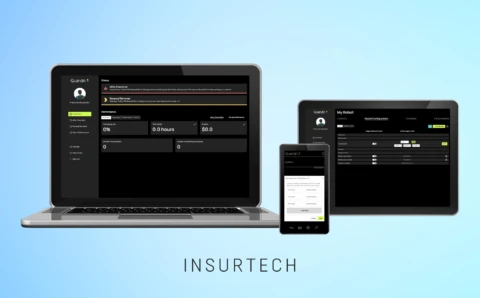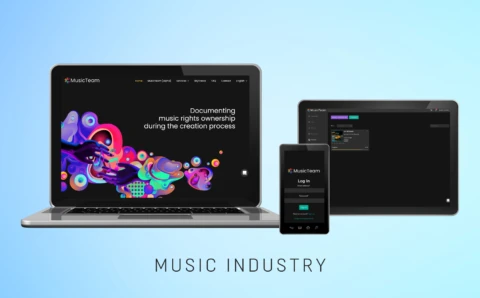
Bespoke software development is often a core strategy for businesses of all scales to skyrocket internal and external efficiency, elevate customer satisfaction and retention, as well as gain competitive advantage across diverse industries. The primary purpose of custom-made products lies in ensuring tailored functionalities that cater to the business’s exact needs, which off-the-shelf software often fails to provide. According to research carried out by McKinsey in June 2022, about 70% of the leading economic performers employ their own software as a means to stand out from the crowded market. Furthermore, one-third of these market giants directly sets the revenue stream with their software.
Cost is an inalienable factor that businesses should keep in mind when considering starting custom software development projects. Such financial investments should be made based on informed decisions that reflect organizational objectives and budget opportunities.
Reading this article, you will make a relevant decision about creating a bespoke product. We’ll describe the many-sided concept of custom software development cost, discovering core factors that significantly impact the final investment. From project scale and complexity to technology stack and team composition, the overall cost estimation is made. Let’s gain insights into budgetary requirements and effectively plan your tailored software development endeavors.
Table of Contents:
Understanding Custom Software Development
The initial aspect you should be aware of is the striking difference between off-the-shelf and custom-made software and why it is worth making the decision toward the second option.
Off-the-shelf vs custom software
Off-the-shelf solutions refer to readymade software packages designed to cater to a wide range of users and industries, being pretty versatile. They ensure a standard set of features and functionalities that are straightforward, simple to deploy, and cost-effective. Still, they often lack customization capacity, limiting their opportunities to meet specific business requirements and being one-size-fits-all, which in many cases is inefficient and irrelevant. When opting for readymade products, you may face excessiveness in functionality or, in contrast, struggle with some missing features.
Custom software, on the contrary, is built to address the outstanding requirements and challenges of a particular business or industry. It equips companies with solid flexibility, scalability, and the power to integrate seamlessly with existing systems, providing a competitive advantage and enhancing operational efficiency in turn.
Custom vs off-the-shelf software
Importance of aligning software with business needs and goals
Aligning software with business requirements and goals is critical to making the most of its effectiveness and guaranteeing a return on investment (ROI). Custom software development allows businesses to cater to their very specific requirements, workflows, and objectives as accurately as possible. Companies adopt custom software to optimize their internal and external operations, elevate productivity, and make their customers satisfied with their services, as software closely aligns with business processes. Moreover, with tailor-made solutions, you are able to seamlessly adapt to dynamic business environments and gradually scale alongside organizational growth, providing long-term value and flexibility. To achieve tangible business benefits, it’s critical to maintain communication between stakeholders, covering business leaders and developers. This way, you’ll ensure that the software solution aligns with strategic objectives.
Factors Influencing Custom Software Development Costs
Let’s consider the most impactful factors when discussing the cost to build custom software.
Complexity of the Project
The complexity and scale of your tailored software development project profoundly impact its final cost. Complex projects traditionally cover complex business logic, extensive data processing, advanced user interfaces, and integration with diverse systems. As complexity increases, the same happens to the time and specific expertise required to design, develop, test, and deploy your software solution. Moreover, complex projects often introduce higher risks of technical obstacles, scope modifications, and setbacks, all of which can contribute to increased costs.
In practice, a plain project may relate to such products as a to-do list app, basic landing pages, or solutions that incorporate straightforward, concise functionality. Such projects typically reduce customization needs and imply the provision of basic features. The simplicity of the project and minimal functionality result in lower development costs due to less time and effort invested. To illustrate, a simple website for startups, often named a “brochure,” can cost roughly $5000 – $7000. Such types of websites traditionally have straightforward functionality, such as displaying company details, products and services it delivers, contact information, and, sometimes, a plain form for communication.
Enterprise-level customer relationship management (CRM) is a widely adopted platform that may serve as an example of a more complex system tailored to specific business processes. Such a product involves intricate workflows, data synchronization across multiple departments, advanced analytics, and potential integration with existing enterprise systems such as ERP and BI tools. In practice, an average minimalistic CRM system may cost roughly $27,000, but for more advanced bespoke CRM development with sophisticated features and tailored functionalities, the investment may range between $40,000 and $120,000.
Features and Functionality
The number and complexity of features directly impact custom software development costs. Each feature adds to the development time, resources, and expertise required to implement it effectively. Complex features often involve sophisticated algorithms, advanced user interfaces, and integration with external systems or services, all of which contribute to higher costs.
Put it in practice, let’s consider insurance claims management software detailing various features, their approximate hours of development, and associated costs.
-
- Automated workflow. Requires 200-600 hours of development, costing approximately $10,000 to $30,000.
- Intake wizard. Comprises 40-120 hours of development, with costs ranging from $2,000 to $6,000.
- Auto-adjudication. Estimated at 200-500 hours of development, with costs between $10,000 and $25,000.
- Case management. Requires 150-500 hours of development, costing approximately $7,500 to $25,000.
- Centralized database. Involves 100-200 hours of development, with costs ranging from $5,000 to $10,000.
- Policyholder communications. Estimated at 80-120 hours of development, with costs between $4,000 and $6,000.
- Task management. Requires 200-400 hours of development, costing roughly $10,000 to $20,000.
- Online claims payment. Needs 80-120 hours of development, with pricing from $4,000 to $6,000.
- Simple submission process. Estimated at 80-160 hours of development, with costs between $4,000 and $8,000.
- Notifications and alerts. Requires 40-80 hours of development, costing approximately $2,000 to $4,000.
- Administration and user management modules. Involves 100-200 hours of development, with costs ranging from $5,000 to $10,000.
The total estimated development effort ranges from 1,270 to 3,000 hours, with associated costs between $63,500 and $150,000.
Let’s also consider the custom software development cost in healthcare by the app types comprising various functionalities:
-
- Telemedicine software: $75,000 – $250,000+
- Patient portals: $75,000 – $250,000+
- EHR/EMR systems: $100,000 – $500,000+
- Hospital management platforms: $100,000 to $300,000+
- Remote track solutions: $50,000 – $500,00
- Mental health software: $60,000-$150,000+
Prioritizing features is essential for managing costs effectively in custom software development. Organizations can allocate resources efficiently and avoid unnecessary expenses by identifying and focusing on basic features that deliver the most value to users and align with business objectives. This approach helps prevent scope creep, budget overruns, and delays by ensuring that resources are dedicated to the most critical aspects of the project.
Technology Stack
The technology stack carefully picked for custom software development significantly influences costs. Different technologies have diversified levels of complexity, scalability, licensing fees, and availability of skilled developers, all of which impact the final amount of the needed expenses.
Open-source technologies like Python offer cost-effective solutions for custom software development due to their solidity, robust community support, and lower licensing fees compared to proprietary technologies. Besides, you may consider cloud computing platforms such as AWS, Azure, and Google Cloud to provide scalable infrastructure and pay-as-you-go (PAYG) pricing models, cutting down upfront hardware expenses and allowing you to scale resources based on demand. It’s significant to notice that proprietary technologies or specialized instruments may incur higher licensing fees and require additional training or expertise, increasing the overall cost to build custom software.
Design Requirements
The design of your software plays a significant role in custom software development costs as it directly sets the service quality, user experience, aesthetics, and intuitiveness. Sophisticated design requirements, such as custom animations, complex layouts, and responsive interfaces, need extra time and expertise to be implemented flawlessly, raising the cost of building custom software. McKinsey report claims that 71% of customers expect businesses to provide personalized interactions, while 76% get frustrated when this doesn’t happen. Therefore, you should definitely consider establishing personal contact with your clients through the product design to engage and retain a broader audience.
Thus, the following aspects form the custom software cost within the design stage.
-
- Bespoke user interfaces tailored to the specific branding guidelines or customer preferences
- Responsive design for smooth user interactions across diverse devices, platforms, and screen resolutions
- Inclusive design with accessibility features to ensure compliance and an excellent experience for all users, covering visually impaired and colorblind individuals
Integration and Scalability
Considering integration requirements and scalability is critical to ensure that custom software can adapt to evolving business requirements and technological advancements. Integration with existing systems or third-party services may incur some additional fees.
Custom software price for integration and scalability requirements depends on the aspects below.
-
- Building APIs or middleware for seamless integration with third-party systems or services increases development costs but enhances interoperability and data exchange capabilities
- Designing the software with scalability in mind, such as creating for horizontal scaling or implementing caching mechanisms, requires more thorough planning and development efforts initially but cuts down long-term scalability costs by avoiding rework or system redesigns, where the price goes through the ceiling.
To better estimate the costs based on your unique project requirements, consider using a development cost calculator, which can help you get a clearer idea of the financial scope tailored to your needs.
Python: Your Software’s Secret Weapon?
Uncover how Python’s versatility and efficiency can streamline your development, cut costs, and boost your ROI.
What’s Included in Software Development Cost
The stages defined below are typically included in the cost to build custom software. Please keep in mind that the number of hours needed for each of the described phases is estimated separately, considering factors such as project complexity, scope, and specific client requirements. This approach guarantees accurate cost calculations and allows for transparency in budget allocation throughout the software development lifecycle.
Analysis
The analysis phase implies collecting and examining requirements, defining project objectives, identifying stakeholders, and fulfilling feasibility studies. This phase sets the base for the entire development flow by verifying that the software solution reflects business goals and user needs. Activities here may incorporate stakeholder interviews, requirements workshops, market research, and building project documentation such as user stories, use cases, and functional specifications.
Design
Design comprises the conceptualization and visualization of the software product’s architecture, user interface, and the journey happening within your product. This stage translates requirements gathered during the analysis process into an across-the-board design structure. Designers work on tasks like creating wireframes, mockups, prototypes, and design specifications. They may also collaborate closely with stakeholders to guarantee that the proposed design meets functional requirements, usability standards, and brand guidelines.
Development
During the development stage, processes like coding, programming, and software creation are carried out according to the design specifications and functional requirements. This phase basically refers to writing code, implementing algorithms, integrating external components or services if needed, and configuring databases. The development may also be managed by sticking to various methodologies such as Agile, Scrum, or Waterfall, depending on project requirements and team preferences. Software engineers work cohesively with designers, quality assurance specialists, and other stakeholders to ensure the software meets quality standards and remains on schedule.
Testing
The QA engineering or software testing stage is an essential phase of software development aimed at determining and liquidating performance faults, bugs, errors, and inconsistencies in the software. Depending on the case, various types of testing may be conducted, such as unit testing, integration testing, system testing, and user acceptance testing (UAT). QA engineers verify that the software functions as it was expected, meets performance benchmarks, and is free from bugs or vulnerabilities. Testing activities may also cover creating test cases, executing test scripts, and documenting test results for analysis and feedback.
Delivering
Delivering involves deploying the finalized software solution to the production environment and making it accessible for end-users or customers. For this, the team executes activities such as installation, configuration, data migration, and user training. Project Managers lead and coordinate the experts, IT administrators, and stakeholders to facilitate a smooth transition from development to production. Delivering may also require equipping users with onboarding documentation, release notes, and ongoing support resources to facilitate the adoption and usage of the software.
Maintenance and Support
Maintenance and support comprise activities aimed at ensuring the long-term functionality, performance, prolonged lifecycle, and security of the software product post-deployment. To achieve this, the team continues addressing any arising bugs, implementing updates or enhancements, managing system performance, and providing technical assistance to end-users. Maintenance may be scheduled or ad-hoc, considering the nature of issues faced and feedback received from users. Support services may cover helpdesk support, troubleshooting, and knowledge base management.
Types of Pricing Models
The chosen cooperation model is another aspect that impacts the custom software development cost. In a nutshell, within a fixed-price model, the project cost is predetermined, while the time and material model implies paying according to the actual amount of resources invested. With the hybrid model, the name speaks for itself — it combines the peculiarities of both approaches. Let’s dive into their specifics and explain how these models differ.
Fixed Price
The fixed-price model implies agreeing upon a set price for the whole project scope, regardless of the actual time and resources invested. Within this model, the client and the development team set project requirements, deliverables, and milestones from the beginning, with the cost typically defined based on these factors. The pros of the fixed pricing cover the following:
-
- Clear budgeting
- Cut down financial risk for the client
- Defined project scope
Still, it may also result in limited flexibility for scope changes, potential disputes over change requests, and the risk of poorly managing project complexities, which can negatively affect the quality and timelines.
Suitable scenarios for fixed-price projects refer to well-defined, straightforward projects with clear requirements and minimal projected alterings. For instance, this may be the development of a small-scale website, mobile application with predefined features, or plain software solution where the scope is not predicted to evolve significantly within the development process.
Time and Material
The time and material pricing model involves charging clients based on the actual time and resources expended during the project, typically at an hourly or daily rate. Here is the spectrum of benefits this model provides.
-
- Flexibility (clients are only charged for the actual work executed and can adjust project requirements and priorities as the situation requires)
- Transparency regarding project progress and cost breakdown
- Long-term collaboration and feedback
- Rapid prototyping
- Quality focus
- Scalability of resources based on project needs
The main challenge associated with this model is uncertainty in project costs, as the final bill is based on factors such as project scope changes, unforeseen issues, and variations in resource utilization. To avoid budget predictability and the risk of scope creep, proper change control mechanisms should be in place.
Research and development (R&D) projects often require a time and material pricing model. They have uncertain outcomes and require dynamic experimentation. They require high flexibility and exploration without constraints like fixed scope or deliverables.
Hybrid Models
Hybrid pricing models combine features of both fixed price and time and material models to deliver flexibility while providing cost predictability. In practice, a project may have a fixed-price component for the initial development stage, with extra time and material billing for subsequent iterations, enhancements, or support. This approach allows customers to manage costs for well-defined project aspects while retaining flexibility for ongoing adjustments and enhancements, bringing solid benefits to the client.
-
- Balanced approach to cost management
- Risk migration
- Flexibility and adaptability to the project priorities
- Transparency and collaboration (considering the current progress, clients have extensive visibility and can give feedback on the results)
Instances of hybrid pricing structures and their benefits cover phased delivery models, where initial project phases are priced fixed, and consequent stages are charged according to time and material.
Another example is milestone-based pricing, where particular project milestones are priced fixed, while extra work beyond these milestones is calculated based on a time and material basis.

Robot Factory
Robot Factory automates insurance workflows, reducing manual effort and improving document management, leading to a 90% increase in efficiency.

MusicTeam
We supported MusicTeam’s v1 launch, delivering intuitive metadata tools for artists and securing a vital grant for future cultural development.

Elaborate
Elaborate provides a solution for lab results, combining automated notifications, summaries & scheduling features for improved patient care.
Estimating Custom Software Development Costs
Let’s cover the way to assess the custom software development price according to each stage of the project implementation and the best techniques to manage it.
Gathering Requirements
Thorough requirement analysis is the primary step in accurately estimating the cost of custom software development. It guarantees that the project objectives, functionalities, and constraints are clearly formed, eliminating the risk of scope creep and budget overruns. In-depth requirement analysis helps grasp the client’s needs correctly, outline potential challenges, and define project milestones precisely.
Techniques for gathering accurate project requirements cover conducting stakeholder interviews, workshops, surveys, and feasibility research. Prototyping, wireframing, and creating user stories can also help in visualizing and validating the idea. We highly suggest adopting collaborative tools and engaging key stakeholders throughout the requirement-assembling process, achieving better communication and alignment of expectations.
Requesting Quotes
When requesting quotes from software development companies, it’s essential to deliver comprehensive project requirements, covering functional specifications, desired features, technical constraints, and any specific expectations regarding timeline and budget. Clearly share the project scope and goals you’re striving to achieve with the deliverables to ensure that vendors understand the requirements accurately.
To choose a credible partner for your custom software development path, assess the vendor’s rates and reviews, experience, portfolio, and expertise in relevant technologies. Compare quotes based on the proposed approach, project timeline, resource allocation, and pricing structure. Stay transparent when discussing additional expenses, such as maintenance cost, support, and any possible change requests.
Budgeting and Contingency Planning
Strategies for budgeting and managing funds for custom software development are assessing the project scope, complexity, and resource requirements accurately from the beginning. Allocate resources based on priority features and functionalities, considering both initial development costs and ongoing maintenance expenses. Comprise buffer funds for unexpected cases and scope modifications to mitigate risks effectively.
Contingency planning for unprojected expenses is essential to guarantee project resilience and eliminate budgetary constraints. Establish a contingency fund to address sudden obstacles, such as technology changes, regulatory requirements, or unprojected technical issues. Regularly track project progress, handle risks as soon as possible, and adjust the budget and resources as required to maintain project stability and ensure prosperous delivery.
Custom Software Development Rates
When choosing the software development vendor and managing the investments, it’s critical to consider the rates or the specific region. We’ve prepared a table with the average custom software development rates for your better understanding.
Eastern Europe is currently one of the most beneficial regions for software development, with an excellent value-for-money rate. According to Statista, the Eastern European software market is projected to achieve a revenue milestone of US$9.19 billion by 2024. Within this market, enterprise software is predicted to lead, with a projected market volume reaching US$3.79 billion in the same year.
This region offers a highly skilled and educated workforce with a strong focus on STEM education, delivering top-tier software engineers and developers. The cost of IT services is relatively lower compared to Western Europe and North America, making it more cost-effective for businesses; still, the performance quality and expertise are truly high. Cultural proximity and language proficiency make communication and collaboration with Eastern teams smoother and more efficient, delivering solid and seamless bespoke software.
Tired of Talent Shortages?
Tap into a global network of skilled developers. Overcome hiring challenges, reduce costs, and focus on what you do best.
Cost Examples
We’ve compiled an average cost of custom software development across diverse industries to enhance your guidance and help you navigate the pricing.
Software for startups
The average cost of custom software development for startups varies according to the size and complexity of your project. On average, startups should expect investments from $15,000 to $50,000.
Hospitality Software
Custom software cost in the hospitality industry equals roughly $37,500. Nonetheless, the total cost can be as low as $25,000 or rise up to $120,000. A hospitality platform introducing a minimal number of features will be more affordable than an app that comprises advanced features, respectively.
Healthcare Software
Healthcare solutions expect approximately an investment of $750,000 – $500,000+. Please keep in mind that the actual cost to build custom software is based on the required compliance (HIPAA, HITECH, PSQIA, and others,) EHR/EMR integration, telemedicine functionality, IoT integration, and the other requirements of this specific case.
Insurance Software
Calculating the average cost of custom software development in insurance also requires many considerations. For your better guidance, a primary platform may start from $10,000 to $50,000, while sophisticated products can go upwards of $200,000 to $500,000 or even surpass these figures.
Energy Software
The custom software development cost for renewable energy platforms can range from $25,000 to $90,000. The project may also be required to integrate with energy systems, implement solid data processing and analysis, and adhere to industry-specific compliance, such as ISO 50001 for energy management systems, which may have a solid cost impact.
eSports Software
The eSports software comprises high-end design, strategy, and plan. The cost of custom software is determined by the targeted platform, monetization strategies, and specific features like tournament management, spectator modes, player rankings, and replay systems, which require more time and financial resources. Thus, the cost may start at $50,000 and go as high as $700,000.
Feel free to contact our professional software development team to get a personalized estimate of your specific case.
Tips on How to Reduce Software Development Cost
To make your project prosperous and successful, it’s vital to manage and cut down on the cost of software development by following certain respective tips. According to a McKinsey report, typically, significant IT projects exceed their budget by roughly 45% and their scheduled timeframe by 7%, ultimately obtaining approximately 56% less value than initially projected.
-
- Clearly determine requirements. Make sure that your project requirements are accurate, comprehensive, well-organized and documented to eliminate scope creep and excessive iterations.
- Put features in the right priority. Single out and prioritize the core features for the initial release, postponing non-essential functionality to further updates.
- Opt for open source solutions. Employ open-source libraries, frameworks, and tools whenever there’s an opportunity to minimize development time and costs.
- Benefit from reusable components. Promote the reuse of already built components and modules within software development to save time and resources.
- Adopt Agile methodology. Stick to an agile development approach, allowing for incremental lifecycle and accelerated feedback loops to guarantee alignment with project objectives and liquidate rework.
- Reach out to offshore development teams. Consider contacting offshore development teams in regions with optimal value-for-money rates to ensure quality standards are met.
- Apply team member cross-training. Cross-train your employees to span several responsibilities, forming an extended skillset and decreasing costs for the bigger team.
- Use automated testing. Implement a robotized testing flow to detect and eliminate bugs earlier, reducing the investment in manual testing and debugging.
- Choose Continuous Integration/Continuous Deployment (CI/CD). Set up CI/CD pipelines to automate creating, testing, and deploying, which boosts efficiency and cuts deployment costs.
- Migrate to the cloud infrastructure. Adopt cloud computing services such as AWS, Azure, or Google Cloud Platform for scalable and cost-effective hosting, eliminating the need for high upfront hardware investments.
- Meet with vendors. Discuss optimal pricing, discounts, or flexible charging terms with software providers to cut down project costs.
- Introduce project management tools. Employ specialized project management platforms to optimize interactions, and make collaboration and task tracking more transparent, elevating productivity and eliminating overhead costs.
- Optimize your development environment. Your developers should have access to efficient software engineering instruments and environments according to your project to minimize downtime and maximize performance.
- Design post-release support plans. Build a strategy for post-deployment maintenance, considering the long-term costs related to software alterings and updates.
- Optimize performance. Invest in performance optimization efforts to achieve efficient resource allocation and scalability, cutting down operational costs long-term.
Conclusion
By gaining insights into the expenses required, businesses and stakeholders can make relevant decisions, allocate resources more effectively, and mitigate possible budget overruns. Comprehending the key cost factors is integral for businesses and organizations willing to begin custom software development initiatives:
-
- Scope and complexity
- Technology stack
- Customization and integration
- Design requirements
- Team composition
- Project timelines
- Regulatory compliance
- Project Management
- Post-deployment support
Before diving into a custom software development project, you need to assess your project-specific needs, objectives, and budget constraints. To do so, we highly suggest carrying out thorough evaluations and collaborating closely with development teams to ensure that your project aligns with your goals and financial parameters, ultimately leading to successful outcomes. Reach out to the PLANEKS team today, and we’ll help you estimate your project, breaking down the final cost for maximum transparency and navigation.


